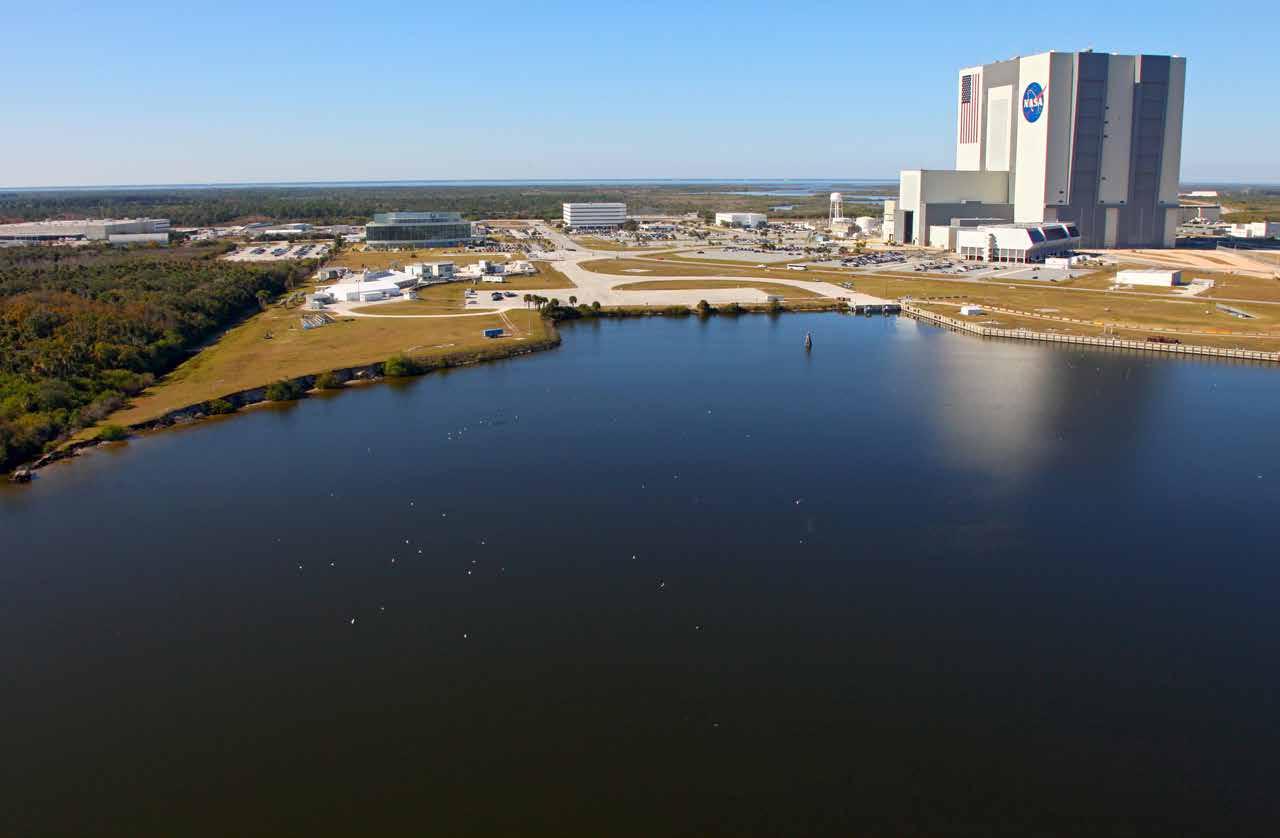
7 minute read
The many stories of the Vehicle Assembly Building
The Many Stories of the VAB
BY LAURA AGUIAR N ASA’s Vehicle Assembly Building first housed the Saturn rockets and then the space shuttles. It will next serve as the final assembly and processing site for NASA’s Space Launch System rocket and Orion spacecraft that will send the first woman and the next man to the Moon on Artemis missions. As a national landmark, it is home to many stories in its history and also remains a critical part of future plans to support human exploration of Mars. Dick Bergmann was an architect in his twenties, working on a post office for the New York City firm Max O. Urbahn, when Mr. Urbahn came to his desk and asked him to put it aside for a quick project that afternoon. The firm was making a pitch to NASA’s Werner Von Braun and Dr. Kurt Debus, and Urbahn needed a sketch of a building that could house rockets.
Advertisement
“It needs to fit the Seagram building inside of it,” Bergmann was told.
Bergmann had worked with guided missiles in the Army, but was uncertain about the scale of a rocket. So he walked up the street to Park Avenue to take a look at the Seagram building. At 38 stories tall, it’s 515 feet in height. Bergmann drafted a concept with four work bays that went up 525 feet, and took it to a printer in the city that could produce the eight–foot-tall sketch for the presentation. “I had just hung the print on the wall and was escaping out one door while Von Braun and Dr. Debus were coming in the other,” remembered Bergmann.
It was first referred to as a “vertical” assembly building, but the name would quickly be changed to the Vehicle Assembly Building and more commonly referred to as the VAB. Bergmann designed the VAB to cover eight acres at 716 feet long and 518 feet wide.
During the pitch, Von Braun and Dr. Debus told Urbahn they would like four silos positioned in a row, instead of two by two, in order to build Saturn rockets for what would become the Apollo program. But Bergmann says Urbahn trusted his sketch and explained to the pair that “Florida has hurricanes. A building that size would become a sail.” Von Braun and Debus awarded the project as presented.
Max O. Urbahn had one year to start construction. The government was not confident that one company could pull off the enormous project given the timeline and needed manpower. Phil Moyer was the project manager responsible for the venture. “We had three companies that had already worked together on a military project in Pakistan,” said Moyer. NASA was in a race. Moyer said they added a fourth company and rented office space for 300 employees. After President John F. Kennedy declared the U.S. was going to the Moon, “I could use that as leverage to get more men,” said Moyer. “We put men up in 32 nearby hotel rooms so they could go get eight hours of sleep.”
Moyer spent several years traveling between New York and Florida. “There was nothing out here but an eagles’ nest at the dock [turn basin] when we started,” said Moyer.
As chief designer, Bergmann spent a lot of time traveling between the office and construction site as well. He remembers once when he misjudged the insect problem in Florida. “I was painting the model of the VAB in a fellow’s garage in Cocoa. The bugs were attracted by the smell and stuck all over the lacquer,” said Bergmann. “I spent an entire night first exterminating the garage, then repainting the thing!”
With the 50th anniversary of the Moon landing, as well as the ramping up of the Artemis program to explore more of the Moon, the VAB is again attracting attention. The American Society of Civil Engineers has designated the VAB as a National Historic Civil Engineering Landmark. Last August, the Florida Association of The American Institute of Architects honored the facility and its adjacent Launch Control Center with a “Test of Time” design The Florida Section of the American Society of Civil Engineers bestowed the ASCE National Historic Civil Engineering Landmark award to Kennedy Space Center’s iconic Vehicle Assembly Building during a ceremony on Jan. 10, 2020. The VAB is the first building at Kennedy Space Center to earn this distinction. At the time of its completion, the 129-million-cubic-foot structure was the largest building in the world. Originally designed and built to accommodate the Saturn V/Apollo used in Project Apollo, the VAB was later modified for its role in the Space Shuttle Program. Photo credit: NASA/Kim Shiflett
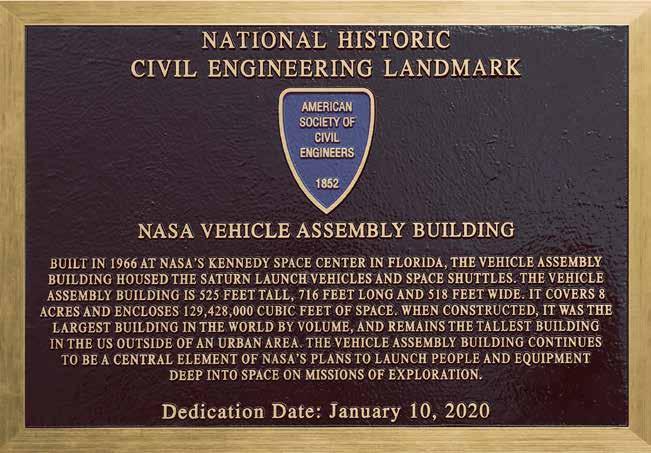
Kennedy Space Center Director Bob Cabana, far right, accepts the National Historic Civil Engineering Landmark award from the Florida Section American Society of Civil Engineers (ASCE) for the Vehicle Assembly Building during a ceremony in front of the iconic facility on Jan. 10, 2020. Next to Cabana, from left are Carol Stevens, ASCE Society of History and Heritage Committee member; and Peter Moore, ASCE Region 5 director. Photo credit: NASA/Kim Shiflett
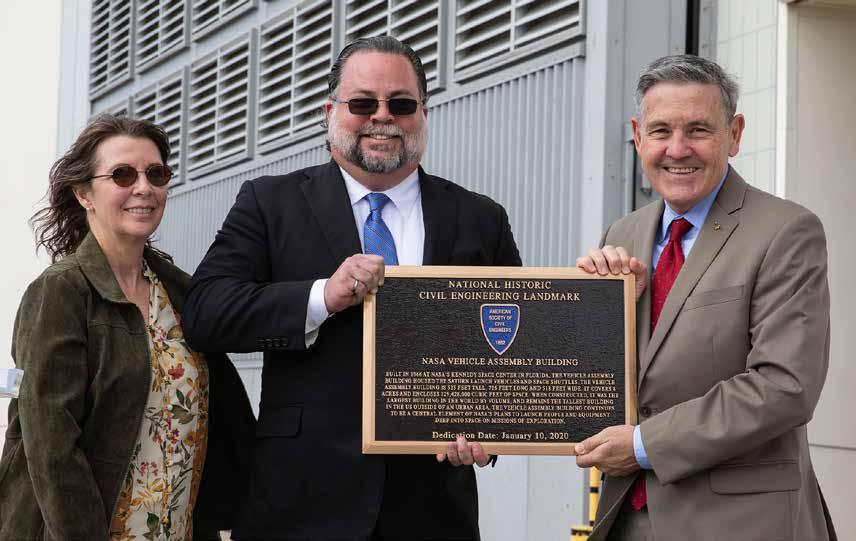
award, recognizing the exceptional contributions of the unique buildings’ architects and engineers.
Moyer and Bergmann recently joined the sons and grandsons of Max Urbahn for a visit to the VAB roof. “I’ve spent a lot of my time on roofs,” said the now 95-year-old Moyer. “There is no such thing as a perfect roof. The weather always gets ‘em.”
“It’s a remarkable roof,” said Bergmann, as he took pictures of the roof. “After all of this time, it’s my first time up here!”
Eric Urbahn recalled visiting the VAB construction site with his father when he was just sixteen. “There were dozens of cranes,” said Eric Urbahn, now 71.
“As the building went up, the cranes went with it,” noted Bergmann. “They were lifting each other up.”
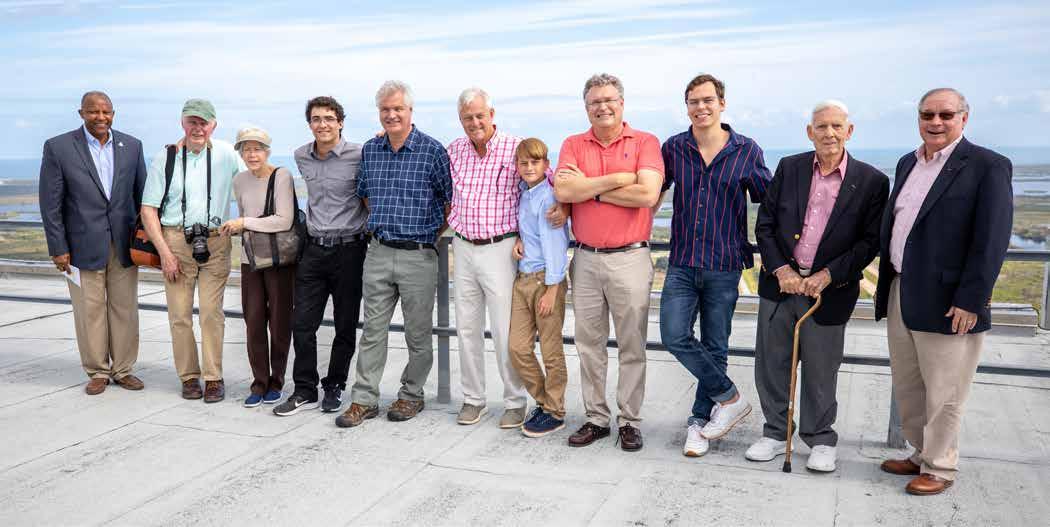
The VAB was complete in 1966. “The most amazing thing is that it ended up looking like that first sketch,” said Bergmann. At the time, it was the largest building in the world by volume and remains the tallest building in the U.S outside an urban area.
After the end of the project, Bergmann left the firm. He had worked a lot of overtime and skipped many vacations because of the tight deadlines. “I was exhausted,” said Bergmann. “So I asked them to cut me a check for those days and I quit.”
In the years following, Bergmann and his wife traveled extensively throughout Europe and all the way to Cape Town, South Africa where he worked for another architectural firm. Yet, despite the worldly adventures, “the VAB is the highlight of my career,” said Bergmann.
Dick Bergmann, second from left, original lead designer for the Vehicle Assembly Building (VAB), and Phil Moyer, second from right, original project lead, are on the roof of the VAB during a tour of Kennedy Space Center in Florida with descendants of Max Urbahn, the original architect, on Nov. 22, 2019. At far left is Kelvin Manning, Kennedy associate director, technical. Photo credit: NASA/Frank Michaux
NASA’s Spitzer Space Telescope has concluded after more than 16 years of exploring the universe in infrared light. Image credit: NASA/JPL-Caltech
After more than 16 years studying the universe in infrared light, revealing wonders in our solar system, our galaxy, and beyond, NASA’s Spitzer Space Telescope’s mission has come to an end.
Mission engineers confirmed at 5:30 p.m. EST on Jan. 30, 2020, the spacecraft was placed in safe mode, ceasing all science operations. After the decommissioning was confirmed, Spitzer Project Manager Joseph Hunt declared the mission had officially ended.
Launched in 2003, Spitzer was one of NASA’s four Great Observatories, along with the Hubble Space Telescope, the Chandra X-ray Observatory and the Compton Gamma Ray Observatory. The Great Observatories program demonstrated the power of using different wavelengths of light to create a fuller picture of the universe.
Among its many scientific contributions, Spitzer studied comets and asteroids in our own solar system and found a previously unidentified ring around Saturn. It studied star and planet formation, the evolution of galaxies from the ancient universe to today, and the composition of interstellar dust.
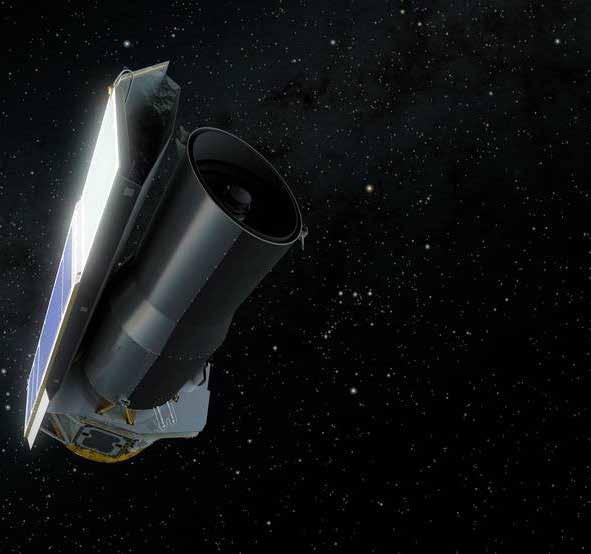
NASA’s Jet Propulsion Laboratory in Pasadena, California, conducted mission operations and managed Spitzer for the agency’s Science Mission Directorate in Washington. Lockheed Martin in Sunnyvale, California, built the spacecraft. Ball Aerospace and Technologies Corporation in Boulder, Colorado provided the optics, cryogenics and thermal shells and shields for Spitzer.
View some of the amazing images showcasing some of Spitzer’s greatest discoveries at
https://www.jpl.nasa.gov/news/news.php?feature=7221.
National Aeronautics and Space Administration




